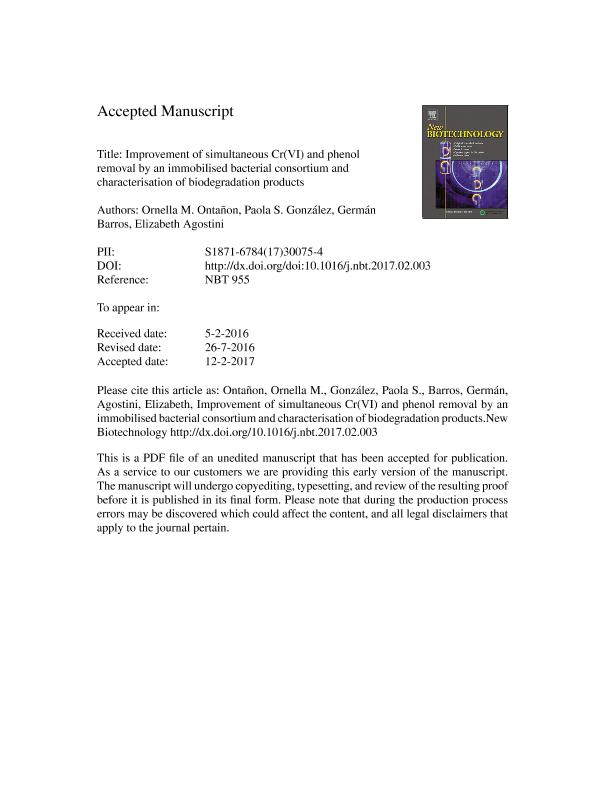Artículo
Improvement of simultaneous Cr(VI) and phenol removal by an immobilised bacterial consortium and characterisation of biodegradation products
Fecha de publicación:
07/2017
Editorial:
Elsevier Science
Revista:
New Biotechnology
ISSN:
1871-6784
Idioma:
Inglés
Tipo de recurso:
Artículo publicado
Clasificación temática:
Resumen
Microbial bioremediation emerged some decades ago as an eco-friendly technology to restore polluted sites. Traditionally, the search for microorganisms suitable for bioremediation has been based on the selection of isolated strains able to remove a specific type of pollutant. However, this strategy has now become obsolete, since co-pollution is a global reality. Thus, current studies attempt to find bacterial cultures capable of coping with a mixture of organic and inorganic compounds. In this sense, the bacterial consortium SFC 500-1 has demonstrated efficiency for Cr(VI) and phenol removal, both of which are found in many industrial wastewaters. In the present study, the ability of SFC 500-1 for simultaneous removal was improved through its entrapment in a Ca-alginate matrix. This strategy led to an increased removal of Cr(VI), which was partially reduced to Cr(III). Immobilised cells were able to tolerate and degrade phenol up to 1,500 mg/l at high rates, forming catechol and cis,cis-muconate as oxidation intermediates. Successful removal potential through 5 cycles of reuse, as well as after long-term storage, was another important advantage of the immobilised consortium. These characteristics make SFC 500-1 an interesting system for potential application in the biotreatment of co-polluted effluents.
Palabras clave:
Alginate Beads
,
Chromium(Vi)
,
Immobilisation
,
Phenol
,
Simultaneous Removal
Archivos asociados
Licencia
Identificadores
Colecciones
Articulos(CCT - CORDOBA)
Articulos de CTRO.CIENTIFICO TECNOL.CONICET - CORDOBA
Articulos de CTRO.CIENTIFICO TECNOL.CONICET - CORDOBA
Articulos(SEDE CENTRAL)
Articulos de SEDE CENTRAL
Articulos de SEDE CENTRAL
Citación
Ontañon, Ornella Mailén; González, Paola Solange; Barros, Germán Gustavo; Agostini, Elizabeth; Improvement of simultaneous Cr(VI) and phenol removal by an immobilised bacterial consortium and characterisation of biodegradation products; Elsevier Science; New Biotechnology; 37; Part B; 7-2017; 172-179
Compartir
Altmétricas




